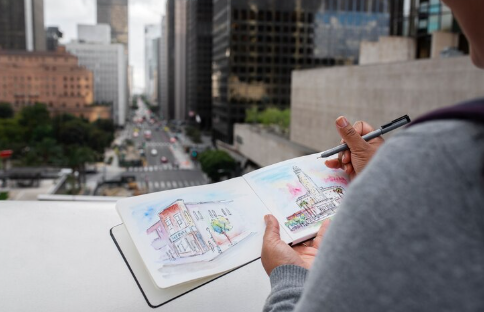The enduring allure of SimCity, across its many iterations, has never solely been about achieving a functional metropolis with a balanced budget; it is about the god-like power of creation, the meticulous sculpting of digital landscapes into living, breathing testaments to human imagination and architectural ambition. Within every player lies the dream of constructing not just a city that works, but a city that inspires—a utopian vision of order, beauty, and efficiency that transcends the game’s underlying algorithms of traffic and zoning. For decades, the community has celebrated those rare creations that achieve this mythical status, cities so meticulously planned and artistically executed that they become legends, discussed in forums, analyzed in videos, and used as benchmarks for what is possible within the confines of the game’s engine. Among these hallowed creations, one name consistently rises to the top as a paradigm of virtual urban excellence: SimCity SU. This is not merely a saved game file; it is a comprehensive urban symphony, a sprawling testament to patience, creativity, and a profound understanding of complex systems management. This in-depth exploration will venture into the heart of SimCity SU, dissecting its architectural philosophy, its groundbreaking solutions to perennial in-game challenges like traffic congestion and pollution, and the artistic vision that elevates it from a simple simulation to a veritable digital work of art, offering a masterclass in virtual urban design.
The foundational genius of SimCity SU lies in its rejection of conventional grid-based planning in favor of a holistic, organic approach that mimics the complex, often chaotic, growth patterns of real-world megacities. Rather than forcing the landscape to conform to rigid, right-angled streets, the architect behind SimCity SU appears to have embraced the natural topography, allowing arterial roads and residential boulevards to curve around mountains, flow alongside rivers, and create a sense of place that feels both intentional and naturally evolved over time. This commitment to realism is further evidenced in the meticulous segregation and integration of zones; industrial sectors are strategically placed downwind and equipped with advanced utilities to minimize their environmental footprint on nearby commercial and high-density residential areas, which themselves are tiered to create a visually striking skyline of skyscrapers gradually giving way to lower-density suburbs. The transportation network is undoubtedly the city’s crowning achievement, a multi-layered masterpiece employing a sophisticated hierarchy of roads, elevated railways, subways, and strategically placed bus stops that function in perfect concert to avoid the infamous traffic apocalypse that doom most ambitious SimCity projects. Every intersection, every on-ramp, and every public transit line is calibrated with surgical precision, ensuring the smooth flow of Sims and commerce that is the lifeblood of any great metropolis, demonstrating a level of planning that moves far beyond simple gameplay into the realm of genuine urban studies.
Beyond its technical mastery, SimCity SU thrives on its unparalleled aesthetic cohesion and meticulous attention to detail, which together create an immersive sense of a living, believable world. The creator has almost certainly employed a vast array of custom content (MODs) not to cheat the system, but to enhance it—adding unique buildings, parks, and props that break the visual monotony of the base game and inject a powerful sense of character and identity into different districts. A financial district feels genuinely distinct from a waterfront entertainment zone, which in turn feels worlds apart from a quiet, tree-lined university campus, all within the same seamless map. This dedication to narrative through design is what truly sets SimCity SU apart; it tells a story of a city that grew intelligently, that values both its green spaces and its economic power, and that provides a high quality of life for its virtual citizens. It serves as the ultimate source of inspiration for players, a shining example that the game is not a puzzle to be solved but a canvas to be painted upon. For veterans and newcomers alike, analyzing SimCity SU is an education, proving that the game’s true ceiling is limited only by one’s own creativity and patience, and effectively redefining the very ambitions of the community by showing them what can be achieved with enough vision and dedication.
Conclusion
In final analysis, SimCity SU stands as a monumental achievement within the gaming community, a benchmark project that transcends its origins as a user-made save file to become a standard-bearer for creative excellence and technical proficiency in urban simulation. It is a comprehensive demonstration that the ultimate goal of SimCity is not merely to avoid bankruptcy, but to forge a digital utopia that balances ruthless efficiency with breathtaking beauty, a goal that SimCity SU achieves with seemingly effortless grace. This project does more than just showcase one player’s skill; it elevates the entire community, providing a boundless source of ideas, a challenging new standard to aspire to, and a powerful reminder of the profound creative potential that lies dormant within the game’s code. Whether you are a seasoned mayor with decades of virtual experience or a newcomer just laying your first residential zone, seeking out and studying SimCity SU is an essential pilgrimage. It is more than a city; it is the ultimate love letter to a classic game, a masterclass in design, and a permanent icon in the pantheon of player-driven creation, solidifying its creator’s legacy as a true maestro of digital urban planning.
Frequently Asked Questions (FAQ)
Q1: What exactly is SimCity SU?
A: SimCity SU is a famous user-created city within a SimCity game (likely a later iteration like SimCity 4 or SimCity 2013). It is renowned for its incredible scale, meticulous urban planning, flawless traffic management, and stunning aesthetic detail. It is considered by many in the community to be a masterpiece of virtual city-building.
Q2: Which SimCity game is SimCity SU built in?
A: While the exact version can sometimes be ambiguous, the most likely candidates are SimCity 4 (with its robust modding community and enduring popularity) or SimCity 2013 (known for its graphical detail and always-online features that facilitated sharing). The principles of its design are applicable to any version.
Q3: Can I download SimCity SU to explore it myself?
A: Yes, that is typically the purpose of such landmark creations. The creator of SimCity SU would likely have shared the city file on a community platform like Simtropolis, ModDB, or the Steam Workshop. You can download it and load it into your own game to explore every detail firsthand.
Q4: Does building a city like SimCity SU require mods?
A: Almost certainly. While the base game provides the foundation, achieving the level of detail, architectural variety, and traffic management seen in SimCity SU almost always requires the use of custom content (MODs), such as Network Addon Mod (NAM) for transportation, custom building sets, and terrain tools.
Q5: What are the key lessons to learn from SimCity SU for my own cities?
A: The key takeaways are: 1) Organic Layouts: Avoid boring grid patterns; let roads follow the land. 2) Transportation Hierarchy: Use a mix of road types, public transit, and pedestrian paths to prevent traffic. 3) Aesthetic Zoning: Create distinct districts with unique visual identities. 4) Patience: Cities of this caliber are built over dozens, if not hundreds, of hours.
Q6: Is SimCity SU the best player-made city ever?
A: “Best” is subjective, but SimCity SU is undoubtedly one of the most cited and admired creations in the community. It is often discussed in the same breath as other legendary cities like Magnasanti, though they represent very different philosophies—one a dystopian efficiency experiment, the other a utopian vision of balanced living.





